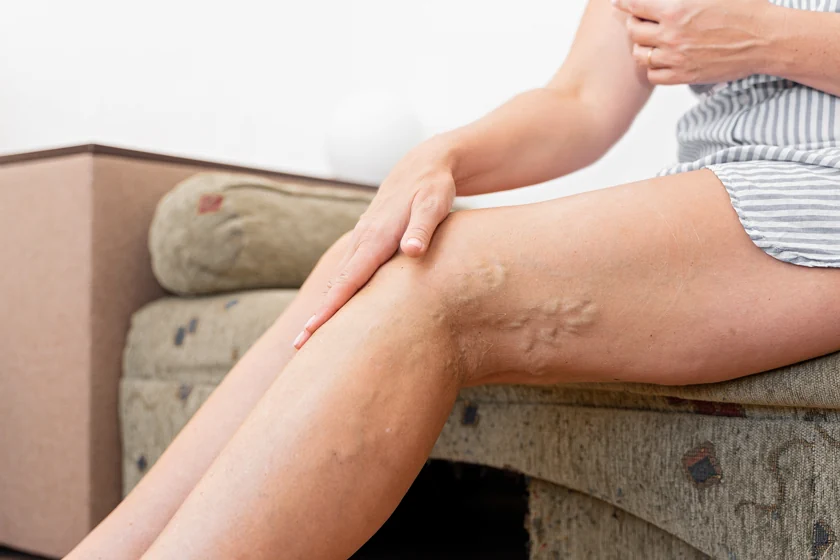
Understanding Leg Discoloration: Causes, Symptoms, and Treatment
Imagine waking up one morning to find your legs have changed color overnight. It’s alarming, right?
Leg discoloration can be an unsettling experience, making you wonder if it’s a simple bruise or a sign of something more serious.
This blog will delve into the world of leg discoloration, uncover its causes, symptoms, treatment options, and why timely intervention is crucial.
What is Leg Discoloration?
Leg discoloration refers to the abnormal darkening or reddening of the skin on the legs. It can range from mild changes in skin tone to more severe dark patches. This condition is often linked to underlying vascular issues, but it can also result from vascular trauma, infections, or skin diseases.
Unlike the occasional bruise or rash that resolves on its own, persistent leg discoloration is usually a sign of a deeper health problem that warrants attention.
What Causes Leg Discoloration?
Several factors can lead to leg discoloration. Some common causes include:
- Poor Circulation: When blood flow to the legs is restricted, it can cause the skin to darken. This is often seen in people with peripheral artery disease (PAD) or chronic venous insufficiency (CVI). In India, studies show that around 10% of the population above 50 years suffer from some form of PAD, making it a significant concern.
- Varicose Veins: Enlarged, twisted veins close to the skin’s surface can lead to skin discoloration due to poor blood flow and increased pressure in the veins. Varicose veins are prevalent among those who spend long hours standing, such as teachers and shopkeepers.
- Infections: Skin infections like cellulitis can cause redness, warmth and dark patches on the legs. Infections are particularly common in individuals with diabetes, a condition affecting over 77 million people in India. Sometimes, there may be no specific causes for developing infections.
- Trauma: Injuries to the legs can cause bruising and skin discoloration. This could result from accidents, sports injuries, or even minor bumps and scrapes that lead to significant bruising.
- Medications: Certain medications, especially those that affect blood flow, can lead to changes in skin color. For instance, some blood pressure medications can cause the skin to become more sensitive and prone to discoloration.
Symptoms of Leg Discoloration
Symptoms can vary depending on the underlying cause but often include:
- Dark patches or red spots on the skin
- Swelling in the legs
- Pain or discomfort
- Itching or burning sensation
- Visible veins (in the case of varicose veins)
- Blisters: These may be the sign of severe infection or raised compartment pressure and should alarm the person for immediate medical attention.
These symptoms can significantly affect one’s quality of life, making simple activities like walking or standing uncomfortable.
How to Treat Leg Discoloration?
The treatment for leg discoloration largely depends on its cause. Here are some common approaches:
- Compression Therapy: Using compression stockings can help improve blood flow and reduce swelling, especially for those with varicose veins or poor circulation. Compression therapy is widely recommended and used by over 70% of patients with varicose veins in India. Edema or swelling persisting even after resolved infection may also benefit from pneumatic compression pump therapy sessions.
- Medications: Anti-inflammatory drugs or antibiotics may be prescribed if an infection is the cause. Medications can also include those that improve blood flow and reduce swelling.
- Lifestyle Changes: Regular exercise, a healthy diet, and avoiding long periods of standing or sitting can improve circulation. Incorporating activities like yoga and walking can be particularly beneficial.
- Skincare: Keeping the skin clean and moisturized can help manage symptoms and prevent infections. Using mild soaps and avoiding harsh chemicals can prevent further irritation.
What Are Treatment Options for Leg Discoloration?
- Sclerotherapy: This involves injecting a solution into the affected veins, causing them to collapse and fade. Sclerotherapy is a common treatment for varicose veins and has a high success rate.
- Laser Therapy: Lasers can be used to reduce the appearance of varicose veins and improve skin color. Laser therapy is non-invasive and offers quick recovery times.
- Surgical Options: In severe cases, surgery might be needed to remove or repair damaged veins. Surgical options can include vein stripping or endoscopic vein surgery.
- Endovenous Ablation: A minimally invasive procedure using heat to close off varicose veins. This method is effective and has a high success rate in treating chronic venous insufficiency.
What Happens if You Don’t Treat Leg Discoloration?
Ignoring leg discoloration can lead to several complications:
- Ulcers: Open sores can develop, especially in cases of chronic venous insufficiency. These ulcers can be painful and difficult to heal, leading to further complications.
- Infections: Untreated infections can spread and become severe. In severe cases, this can lead to systemic infections requiring hospitalization.
- Increased Pain and Discomfort: Symptoms can worsen over time, leading to significant pain and mobility issues. Chronic pain can affect daily activities and overall quality of life.
- Progression of Underlying Conditions: Conditions like PAD or CVI can worsen, leading to more serious health problems such as deep vein thrombosis or even leg amputation in extreme cases.
Expert Tips by Vascular Surgeon Dr. Sumit Kapadia
Dr. Sumit Kapadia, a renowned vascular surgeon in Vadodara, offers some expert tips for managing leg discoloration:
- Early Detection: The sooner you identify and address leg discoloration, the better. Early intervention can prevent complications and improve outcomes.
- Stay Active: Regular physical activity promotes good circulation and can help prevent varicose veins.
- Healthy Diet: A diet rich in fruits, vegetables, and lean proteins can improve vascular health.
- Proper Skincare: Keep your legs clean and moisturized to avoid infections and skin breakdown.
- Seek Professional Help: If you notice persistent discoloration, consult a vascular surgeon to determine the cause and appropriate treatment.
Conclusion
Leg discoloration is more than just a cosmetic concern; it can be a sign of serious vascular issues.
Early detection and treatment are crucial in preventing complications and improving quality of life. Vascular surgeon Dr. Sumit Kapadia emphasizes the importance of professional care and lifestyle changes in managing this condition.
If you notice any unusual changes in your skin color, don’t hesitate to seek medical advice.
FAQs
Yes, leg discoloration can indicate serious underlying issues like chronic venous insufficiency or peripheral artery disease. It’s important to consult a healthcare professional for a proper diagnosis.
While home remedies like elevating your legs and wearing compression stockings can help, it’s essential to identify and treat the underlying cause with professional guidance.
The healing time varies depending on the cause and treatment. With appropriate care, some cases may improve in weeks, while others might take longer.
Maintaining a healthy lifestyle, staying active, and managing any underlying health conditions can help prevent leg discoloration.
Yes, leg discoloration is relatively common, especially among older adults and those with vascular conditions. In India, lifestyle factors and prevalence of conditions like diabetes contribute to this issue.

MBBS, MS, MRCS, DNB-Fellow
Dr. Sumit Kapadia
Dr. Sumit Kapadia / MR KAPADIA SUMIT a gold-medalist from Baroda Medical College, obtained his general surgical training and senior residency from SSG Hospital, Vadodara.

MBBS, MS, MRCS, DNB-Fellow
Dr. Sumit Kapadia
Dr. Sumit Kapadia / MR KAPADIA SUMIT a gold-medalist from Baroda Medical College, obtained his general surgical training and senior residency from SSG Hospital, Vadodara.



